Quick Airline Information:
✈Airline IATA* code: AZ
✈Airline ICAO* code: AZA ✈Founded: 26 August 2008. (Original Alitalia since Sept 1946)
✈Website: www.alitalia.com✈Alliance: Sky Team
✈History
✈Operations and Destinations 🌍
✈Fleet ✈️
✈Photo Slide 📷✈Safety Video 🎬
✈Airline reviews ⭐
*IATA: (International Air Transport Association)
*ICAO: (International Civil Aviation Organization)
History Menu:
Alitalia is the official airline of Italy. It has been running under the same name since 1946, flying the Italian people around Europe and South America, where it has enjoyed a strong dominance and presence for many years. However, despite the airline still flying, it hasn't been a smooth ride. Plagued with corruption, strikes and governmental intervention, the airline has struggled to make a profit since it’s creation, except for a couple of times only. It has changed hands numerous times throughout its history, hoping to turn things around but unfortunately Alitalia always has seen itself on the news for the wrong reasons. The history below tells the story of the national Italian airline since it’s early days.
Alitalia – Linee Aeree Italiane S.p.A. was established on 16 September 1946. It was formed as a result of an Anglo-Italian agreement and was funded by the Italian government and British European Airways (BEA) in a 60/40 share arrangement. Its popular name, Alitalia, blended the Italian words ali (wings) and Italia (Italy). It started operations on 5 May 1947. The inaugural flight was with a Fiat G.12 Alcione, from Turin to Catania and Rome. In July of the same year, it made its first international flight from Rome to Oslo with a Savoia Marchetti SM95 aircraft with 38 passengers on board. Fiat G.12
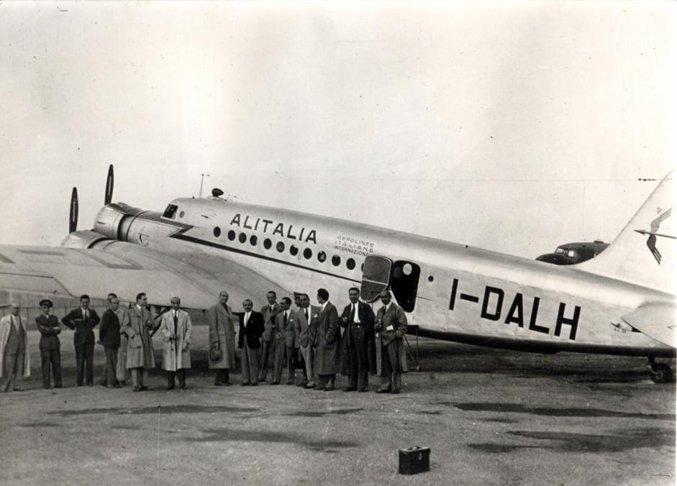
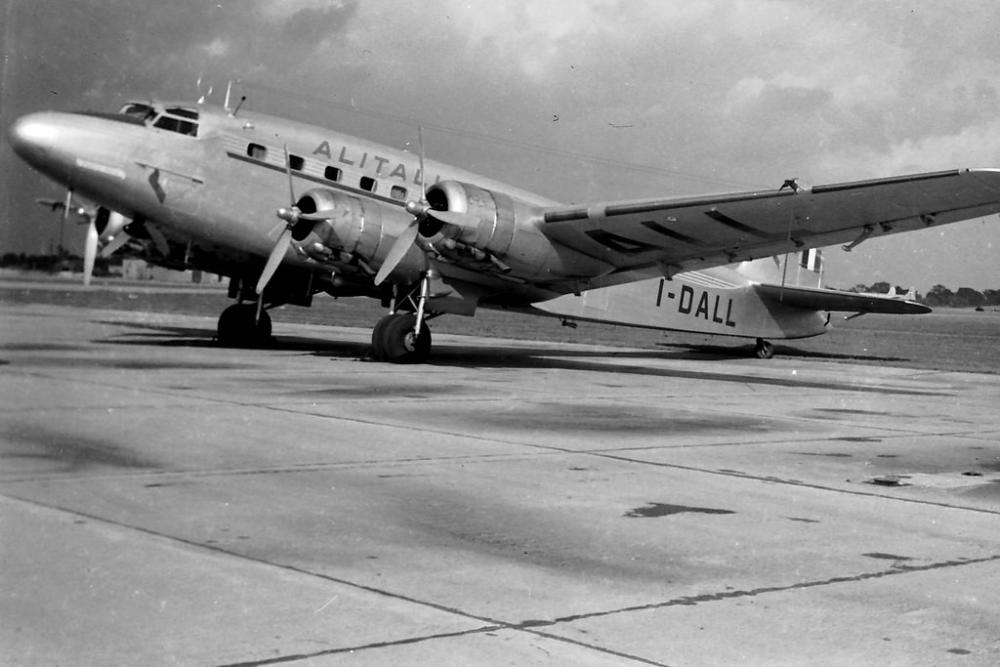
In March of the following year, a Lancastrian plane takes off to carry out the first intercontinental flight. The thirty-six hour haul followed the route Milan-Rome-Dakar-Natal-Rio de Janeiro-São Paulo-Buenos Aires. The Lancastrian, a commercial version of the British-built Avro Lancaster bomber, helped launch Alitalia's longest service route at the time.
Alitalia replaced its entire fleet in 1950 with one Douglas DC-3 and four DC-4s and took over another Italian airline. By 1955, the airline once again replaced its entire fleet, this time acquiring four Convair 340s for short-to-medium routes and four DC-6Bs for long-range routes. On 31 October 1957, Alitalia merged with Linee Aeree Italiane and took on the name of Alitalia Linee Aeree Italiane. The merger brought twelve DC-3s, which were replaced seven years later by turboprop Fokker F-27s. Also in 1957 the first DC7 arrived.
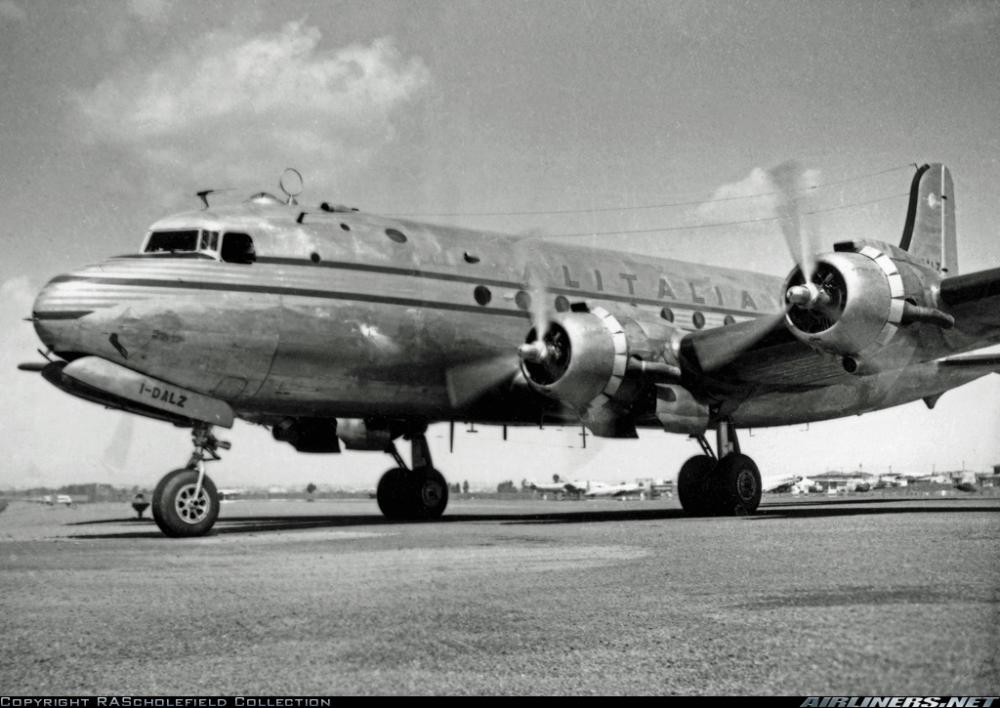
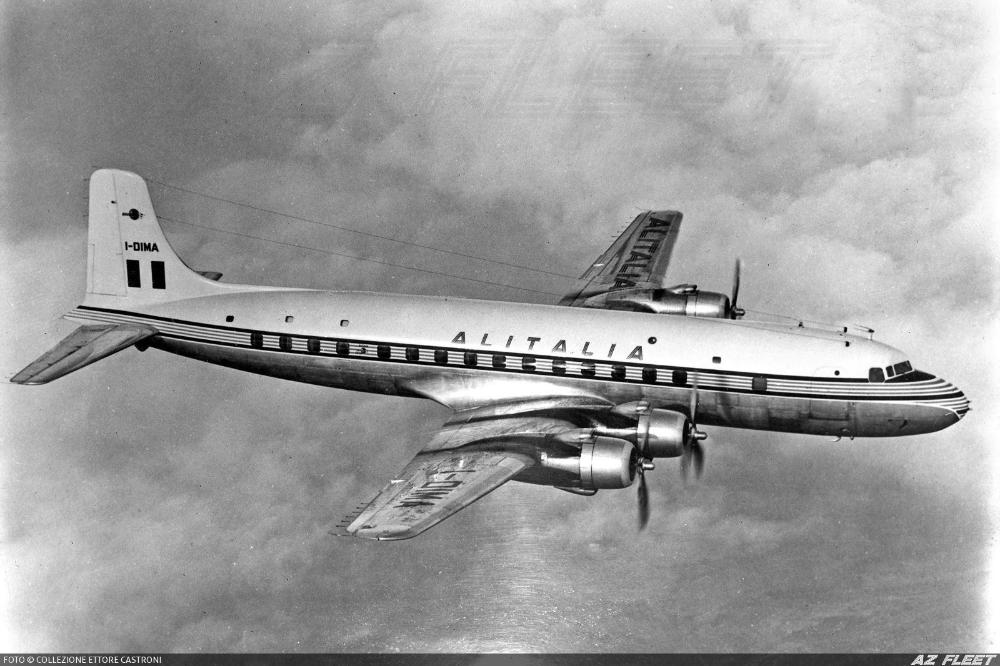
The network of routes continued to expand throughout the 1960s, reaching fourth in the world for distance flown yearly. Total revenue and number of passengers carried made the airline the twelfth largest in the world and the third largest in Europe. The original British investment was returned during this decade, and the airline became completely owned by Italian interests. By 1960 Alitalia was operating jet airliners on some European routes, the Sud Caravelle, and the Douglas DC-8 on several longer distance routes. The Vickers Viscount propeller-turbine four-engined airliner was flown by Alitalia on its European network throughout the 1960s. Alitalia began adding DC-9s and the much larger DC-8 Super 62 airplanes to the fleet in 1967.
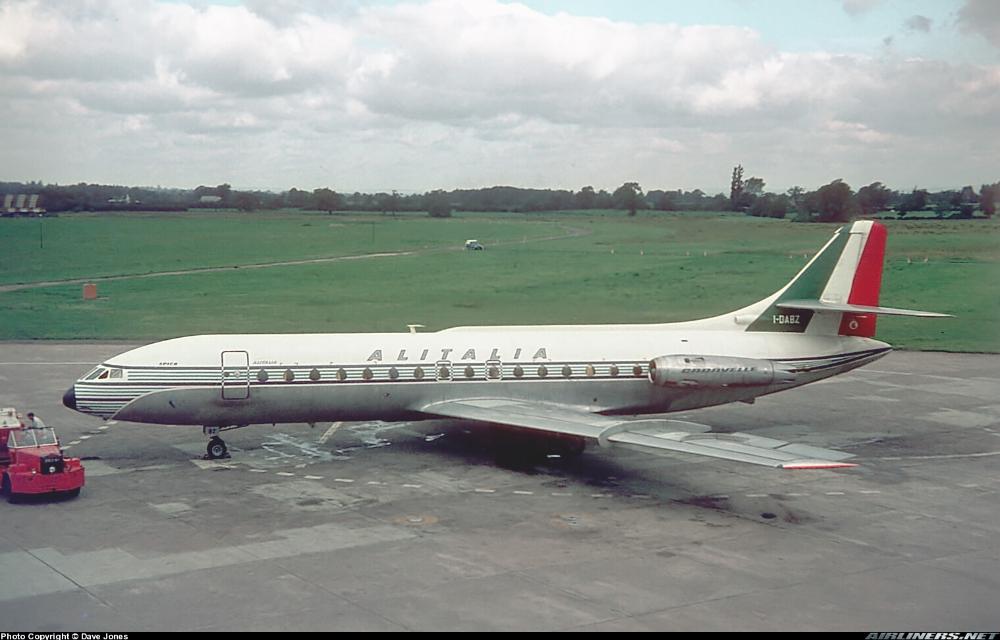
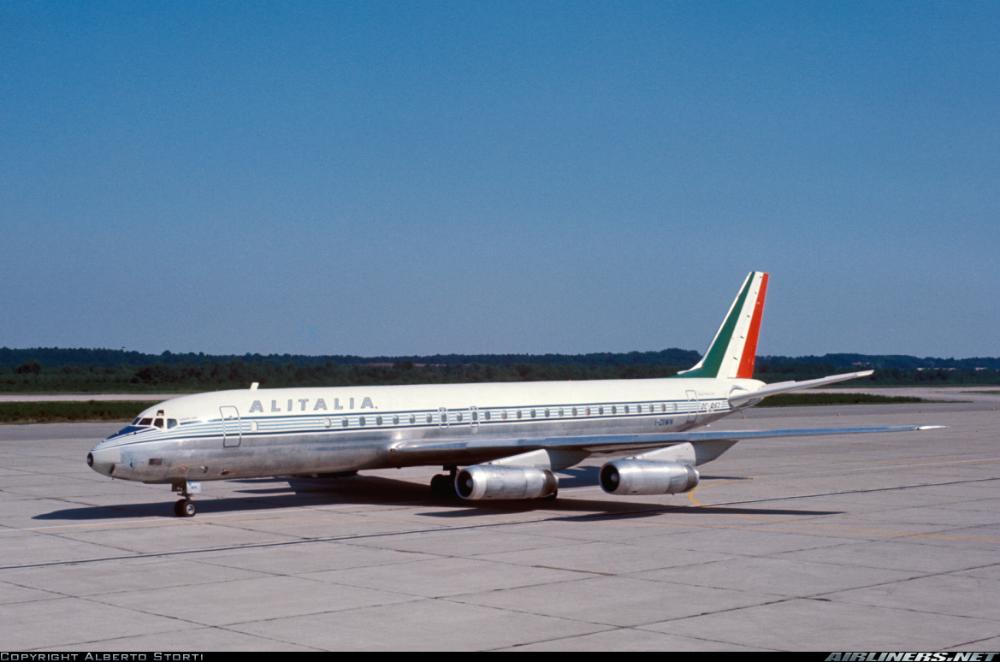
The Boeing 747 jumbo jet entered service and Alitalia became the first European airline company to fly with an "all jet" fleet in 1969. The first DC-10 arrived in 1973, joining the 747 on transatlantic flights connecting Rome with such destinations as Boston, Chicago, Los Angeles, and New York.
The airline updated its short-to-medium fleet with 727-200 airplanes, the first of which arrived in 1976. In 1978 Alitalia had its head office in the Palazzo Alitalia in Rome.
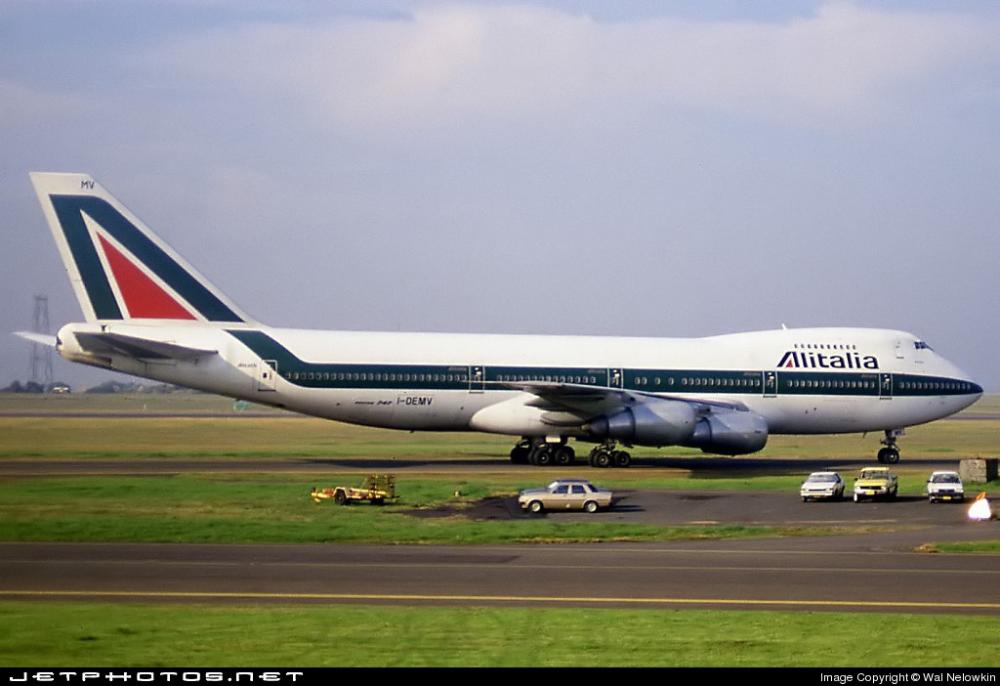
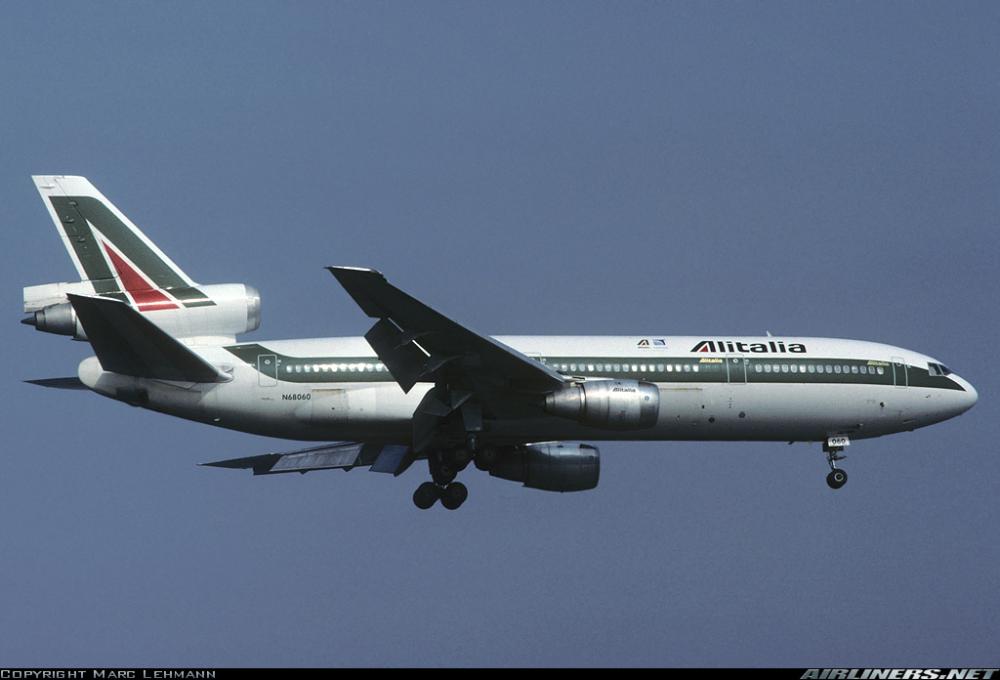
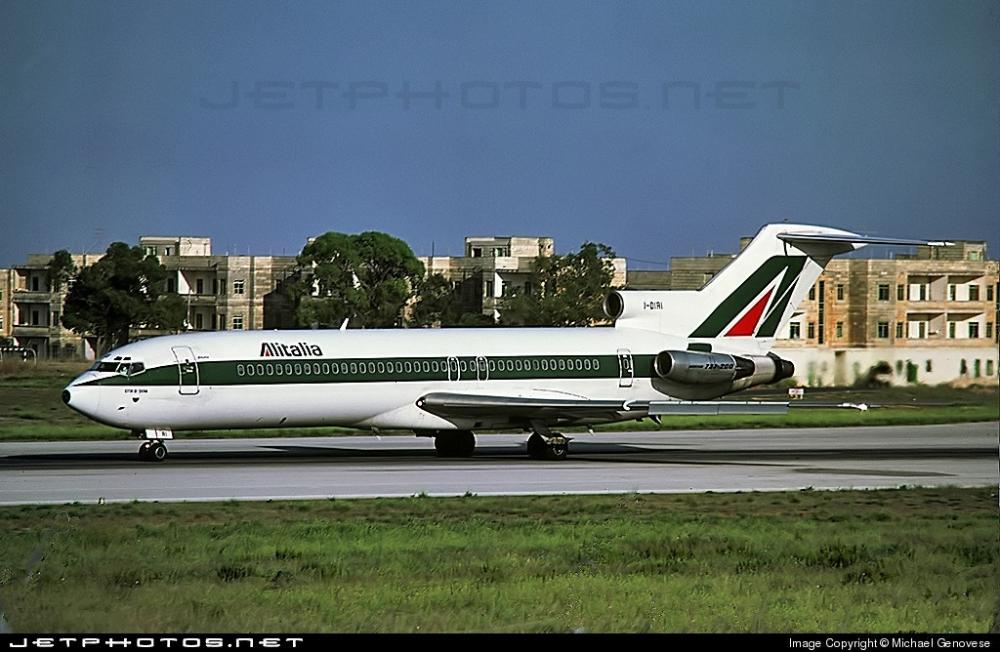
In 1982 the fleet renewal continued with the insertion of the Airbus A300, twin-engine jets with great capacity, and the new MD Super 80 for medium-haul flights, while the B747-200 Combi became part of the fleet, permitting greater flexibility in passenger and cargo transport.
In 1991 with the arrival of the MD11 it was now possible to fly nonstop for more than 12,000 km. Giorgio Armani designed new uniforms and he also collaborated in the design of the interiors of the new aircraft. The MilleMiglia Program was launched in 1992.
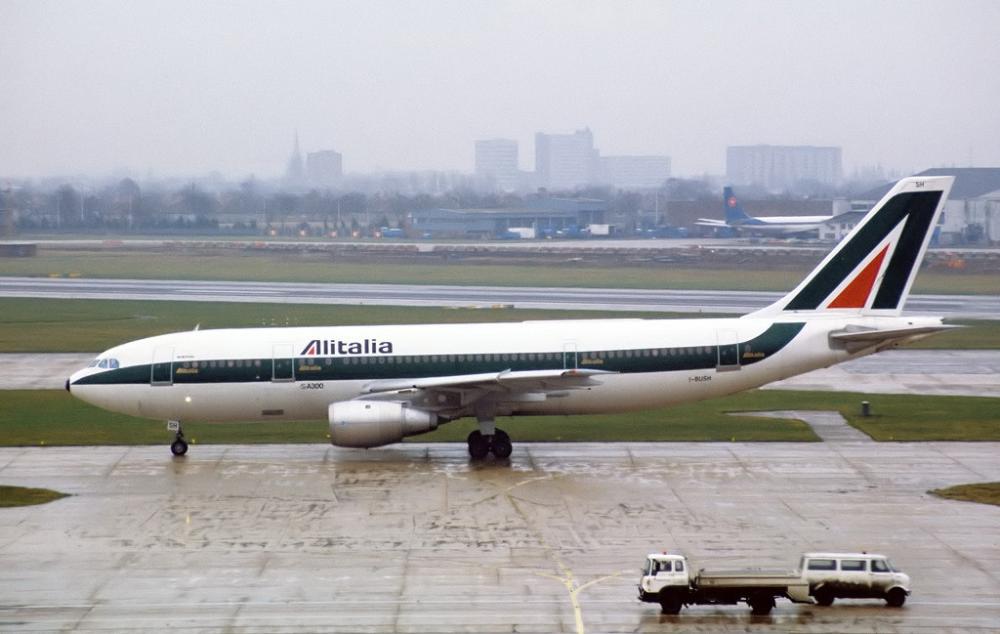
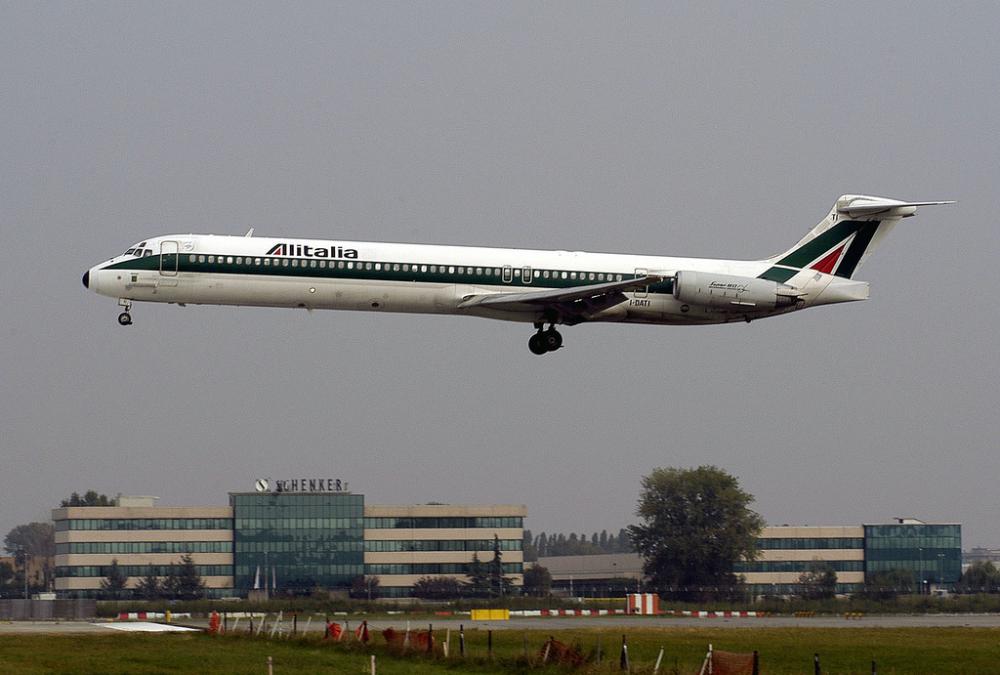
The A321, capable of carrying 187 passengers, was added to the medium-range fleet in 1994. The Boeing 767-300ER was introduced in the Alitalia fleet in 1994 as well. In 1997 it set up a regional subsidiary Alitalia Express and in 2001 became a member of SkyTeam, joining Air France, Delta Air Lines, Korean Air, Aeromexico and CSA Czech Airlines.
The modern and efficient twin-engine B777 replaced the glorious B 747s on the long-haul routes from 2002. In November 2003 Alitalia announced that it would cut 2,700 jobs over the next three years to prepare the airline for a merger with Air France and KLM. In April 2004 Alitalia acquired Gandalf Airlines, a bankrupt regional airline, to gain additional slots at several European airports, mainly in Milan (Linate) and Paris (Charles De Gaulle).
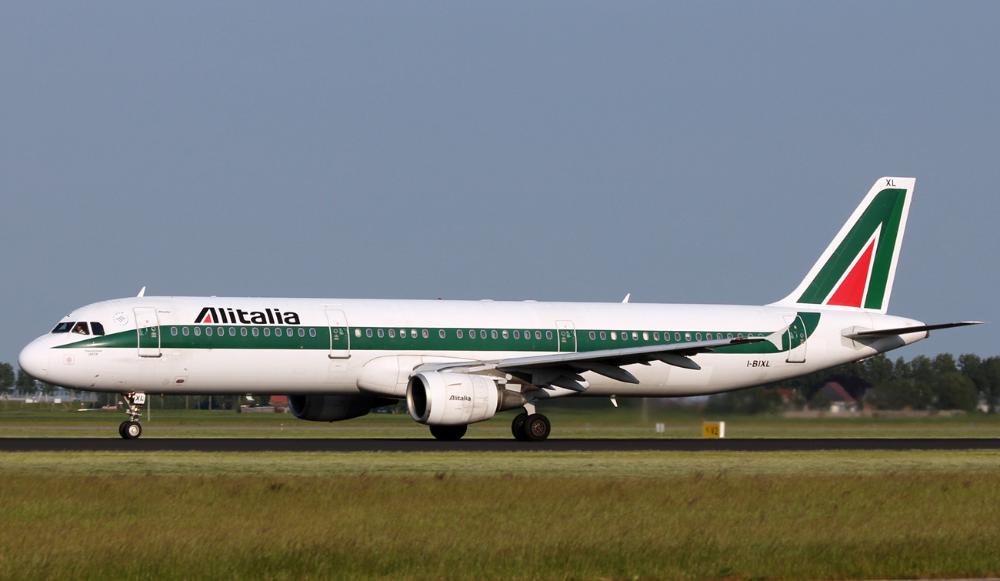
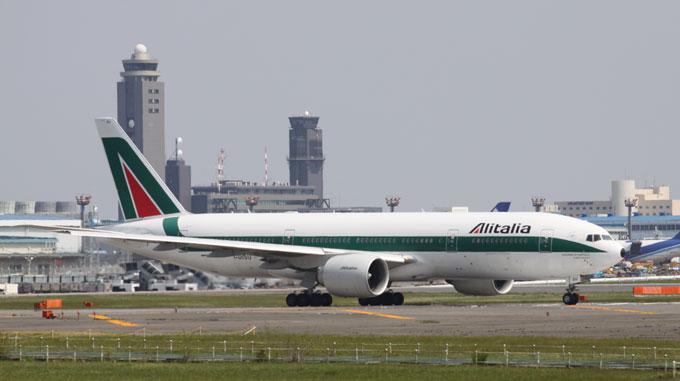
Alitalia lost money for years owing to problems with pilots and crew members, labour difficulties, and government and political interference with attempts to solve them. The Italian government supported Alitalia many times until the European Union set a moratorium on any support before 2011. But Alitalia did not survive this moratorium and so it Alitalia went into liquidation in 2008. The viable parts of Alitalia – Linee Aeree Italiane S.p.A. were bought by the private company Alitalia – Compagnia Aerea Italiana on 12 December 2008, which started operations on 13 January 2009.
Alitalia has reported only one year of profit (1998) since its foundation in 1946. Alitalia reported net losses of more than €3.7 billion between 1999 and 2008.
The government could in 2006 no longer offer support to the failing airline since it had been forbidden by the European Union to inject new capital. Therefore, as all other attempts to save the company had failed, the Italian government announced its willingness to lead Alitalia towards privatization by lowering its part of ownership in it. Several failed attempts to take over or merge Alitalia were made.
CAI, Compagnia Aerea Italiana, a consortium of Italian investors, presented a binding offer of €1,100 million to Alitalia's bankruptcy administrator on 30 October 2008 to acquire parts of the airline, pressing ahead despite refusal by some pilots and flight attendants' unions to sign on to the rescue plan. The Italian government and the bankruptcy administrator agreed to the CAI takeover offer on 19 November 2008. The profitable assets of Alitalia – Linee Aeree Italiane S.p.A. were transferred to CAI on 12 December 2008. CAI also bought fellow Italian airline Air One, which merged with Alitalia.
On 13 January 2009, the "new" Alitalia launched operations. The owners of Compagnia Aerea Italiana sold 25% of the company's shares to Air France-KLM. Air France-KLM also obtained an option, subject to certain conditions, to purchase additional shares after 2013. The "new" Alitalia has not claimed the old Alitalia's history as its own, as can be seen in official documents regarding the new "Alitalia Group". The new Alitalia does not own many of its operating airplanes, mostly are leased from Aircraft Purchase Fleet. Alitalia adopted a new logo in 2009. This version was updated again in 2016.
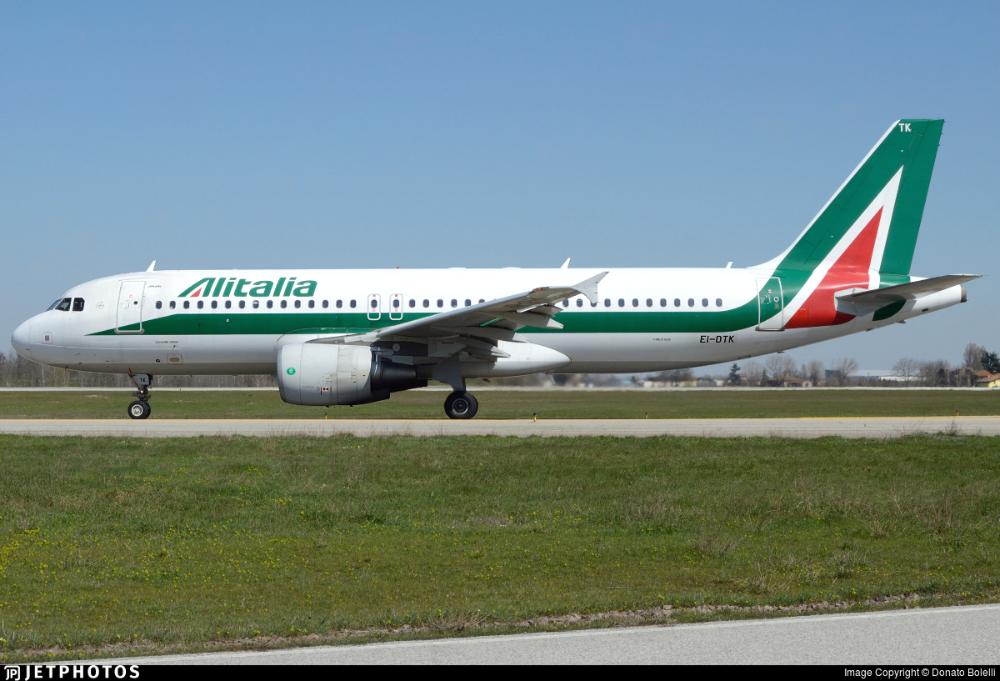
Alitalia announced that, starting from March 2010, it would use Air One as a low-fare airline with operations based at Milan Malpensa Airport, focused on short-haul leisure routes. Air One later operated from Milan-Malpensa, Venice-Marco Polo, Pisa and Catania as of January 2013.
On the 15 of July 2010 the Italian national airline received its first new Airbus A330-200 aircraft, configured in a high comfort three-class layout. It is the first Alitalia aircraft to feature the new premium economy 'Classica Plus' class and updated 'Magnifica' business class. Embraer delivered the first of 20 E-Jets to Alitalia in September 2011, the Embraer 190 forming part of an order placed by the Italian carrier in March 2011. On 20 April 2011, Alitalia's regional subsidiary, was rebranded as Alitalia CityLiner. It became the only regional airline of the Alitalia group and took up the role formerly performed by Alitalia Express. A brand new fleet of 20 Embraer 175s and 190s was delivered between September 2011 and March 2013. The Boeing 767-300 was retired after 17 years of service in 2012. The last 767 flight was from Accra via Lagos to Rome on 25 October 2012.
.jpg)
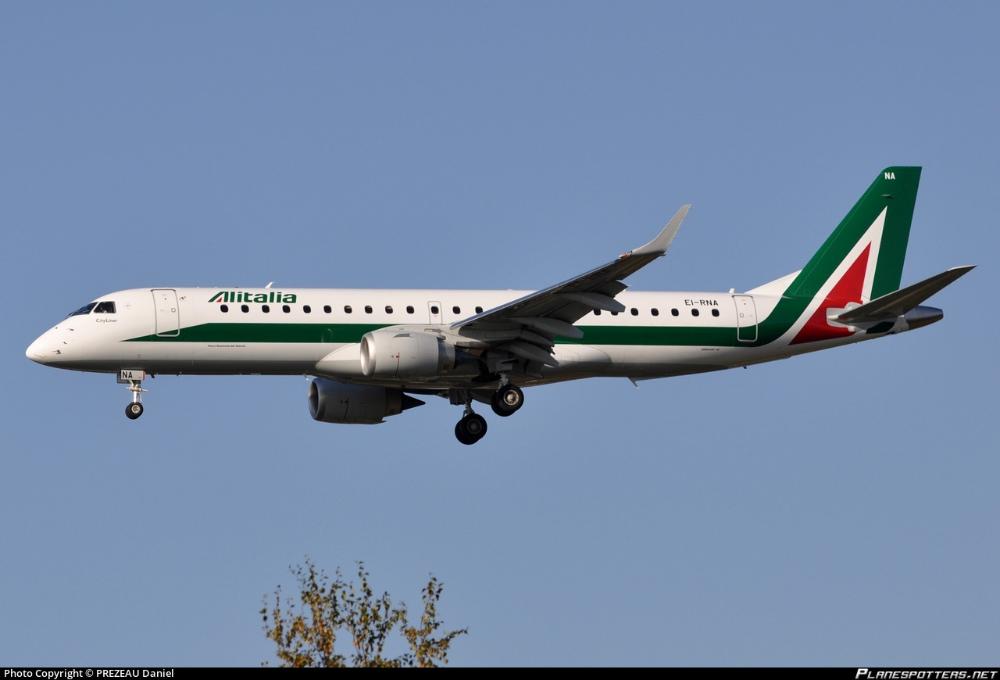
On 3 May 2013, in a sting codenamed "Operation Clean Holds", police made 49 arrests at Rome's Fiumicino airport, with another 37 in Italian airports including Bari, Bologna, Milan Linate, Naples, Palermo and Verona. All were Alitalia employees caught on camera and most were charged with aggravated theft and damage. In late 2013, facing bankruptcy, the loss of a major fuel supplier, and a possible grounding by Italy's civil aviation authority, the airline announced a €500 million rescue package. The airline went through some more restructuring but union strikes, delays and poor reputation made the airline have heavy losses. It was looking desperately for a partner as the airline was at the edge of bankruptcy. Then a life-line came.
In June 2014, the Abu Dhabi-based UAE national airline Etihad Airways announced it was taking a 49% stake in Alitalia. On 30 September 2014, Alitalia's budget subsidiary Air One ceased flight operations. On 1 January 2015, Alitalia-CAI formally passed its operations to Alitalia-SAI, a new entity owned 49% by Abu Dhabi-based Etihad Airways and 51% owned by the former Italian stakeholders of Alitalia-CAI. 1.
Since then the airline has been growing, launching new routes and trying to make a profit where others failed. It added frequencies where demand was high or made selected destinations revisions. It has had a strong campaign to improve it's quality and image and the alliance with Etihad allowed many more destinations to be reached from both Rome, Milan and Abu Dhabi. By May 2016, a new revised stylish logo was revealed, the interiors of Alitalia’s 122 aircraft were to be refitted in just five months, and all wide-body aircraft were to be fitted with Wi-Fi and new in-flight entertainment systems by the middle of 2017. Also, the airline, planned and ordered new aircraft: the Airbus A320neo for short and medium haul routes.
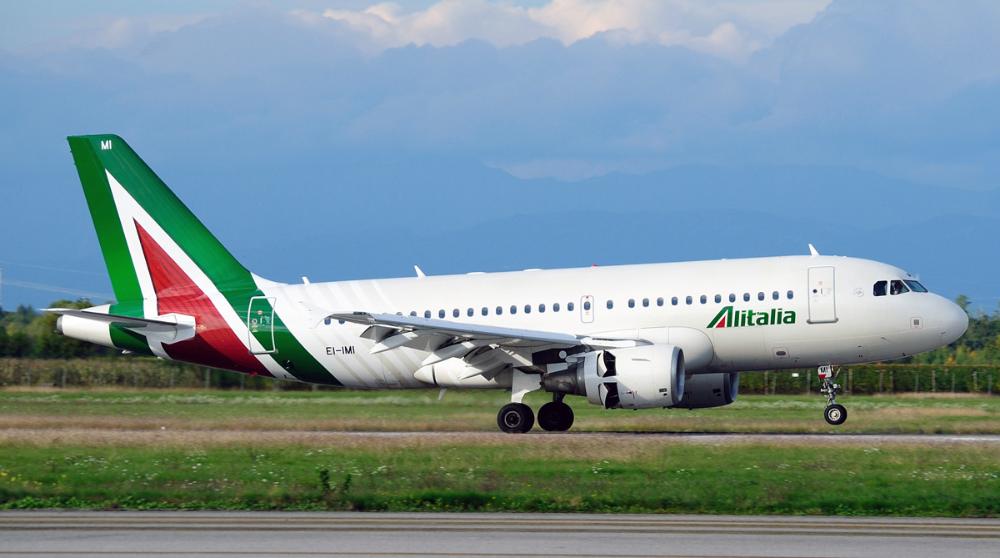
On 25 April 2017, after Alitalia employees rejected job-cuts proposal aimed at reducing costs, the airline announced that it will start going through a bankruptcy process. The Italian government permitted Alitalia to file for bankruptcy on 2 May 2017. On 17 May 2017, after the government had ruled out nationalizing the airline, it was officially put up for sale (again) to be auctioned off. In June, EasyJet expressed interest in purchasing the airline.
In 2018, Delta Air Lines, EasyJet and Ferrovie dello Stato Italiane lodged formal expressions of interest to acquire Alitalia. However negotiations are still going on and as of November 2018 the airline is still under bankruptcy protection, unless it finds a potential strong bidder and rescue plan the Italian legacy airline might see itself disappear from the international airports in the not too distant future.
History source: Wikipedia.org and Alitalia.com
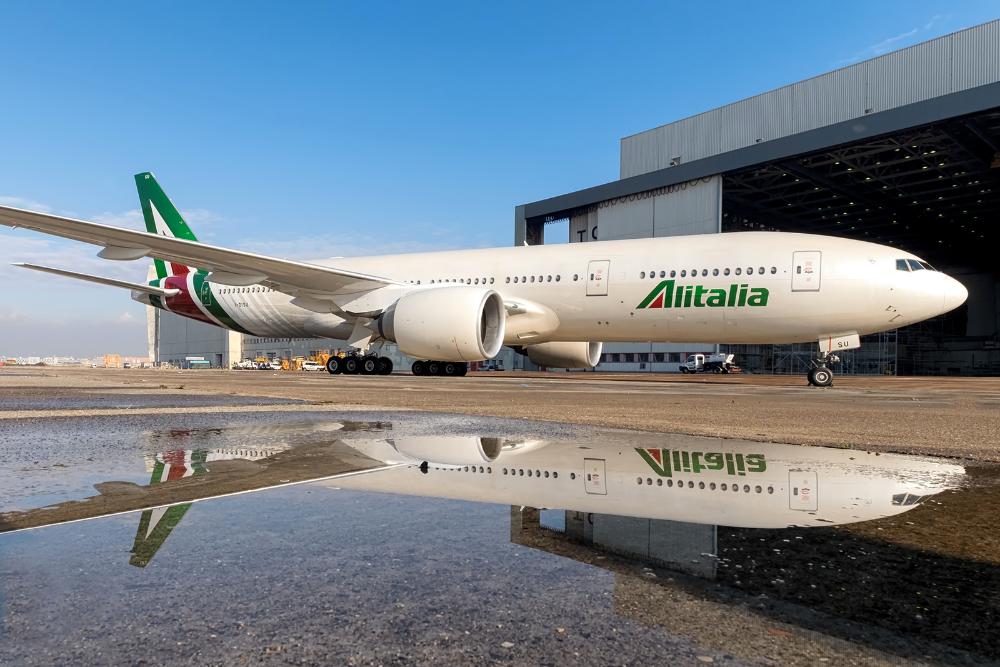
Operations and Destinations 🌍:
Alitalia serves 83 destinations in 41 countries as of 2018. Alitalia's hub is at Rome's Leonardo da Vinci–Fiumicino Airport. As well, Milan Malpensa is another hub for the Italian Airline. Catania and Palermo are focus cities, with important domestic links and feeder flights for the main hubs. Alitalia flies to most European cities and many key Mediterranean routes, both cities and popular leisure destinations. Note that it's code-share agreement with Etihad Airways means that flying to many other destinations towards the east it also possible via Abu Dhabi with a connecting flight.
Alitalia flies to the following destinations* at the time of publishing:
| Region 🗺️ | Destinations 🌍🌎🌏 |
|---|---|
| ✈Italy (domestic) | Alghero, Bari, Bologna, Brindisi, Cagliari, Catania, Comiso, Florence, Genoa, Lamezia Terme, Lampedusa, Milan, Naples, Olbia, Palermo, Pantelleria, Pescara, Pisa, Reggio Calabria, Rome, Trapani, Trieste, Turin, Venice, Verona |
| ✈Europe | Amsterdam, Athens, Barcelona, Belgrade, Berlin, Brussels, Budapest, Copenhagen, Corfu, Dubrovnik Düsseldorf, Frankfurt, Geneva, Heraklion, Ibiza, Kiev, Larnaca, London, Luxembourg City, Madrid, Málaga, Malta, Marseille, Menorca, Moscow, Munich, Mykonos, Nice, Palma de Mallorca, Paris (CDG, ORL), Podgorica, Prague, Rhodes, Saint Petersburg, Santorini, Skopje, Sofia, Split, Stockholm, Tenerife, Thessaloniki, Tirana, Toulouse, Valencia, Warsaw, Zürich |
| ✈Asia | Seoul, Malé, Tokyo, Delhi |
| ✈The America's | Mexico City, Havana, Toronto, Buenos Aires, Santiago, Rio de Janeiro, São Paulo, Boston, Chicago, Los Angeles, Miami, New York City, Washington, D.C |
| ✈Africa and the Middle East | Algiers, Amman, Beirut, Cairo, Casablanca, Johannesburg, Oran, Port Louis, Tehran, Tel Aviv, Tunis |
*Destination list is for reference only. Please check directly with the airline for updates.
*Note some destinations are only seasonal.*Correct info as of Nov 2018.
Fleet ✈️:
The fleet of Alitalia is in it's majority leased. Due to the financial situation of the airline after it's many take over's and ownerships it was decided to establish and partner via a leasing company based in Ireland, to better administrative it's fleet requirements.
The Alitalia fleet* consists of the following aircraft, including those operated by its subsidiary Alitalia City Liner:
| Network 🌐 | Aircraft ✈️ |
|---|---|
| ✈Regional (domestic + European flights) | Embraer E175, E190 |
| ✈Short and Medium haul | Airbus A319, A320, A321 (to be delivered: A320neo), A330. |
| ✈Long haul | Airbus A330. Boeing 777-200, B777-300ER (Sao Paulo route). |
*Correct fleet info as of Nov 2018.
Alitalia Photo Slide 📷:
Alitalia Safety Video (A330) 🎬:
Reviews ⭐:
 |  |
|---|---|
| ✅Best Airline to fly to Italy, and for domestic connections. | 👎Customer Service is poor and can find staff with limited English. |
| ✅Good competitive fares and all inclusive complimentary meals/drinks on board. | 👎Getting feedback from the Arline after a complaint or enquiry is hard. |
| ✅Modern planes and new aircraft for long-haul routes | 👎If transiting, Rome Airport is old, not very practical for some connecting flights as distances are far. Also it's not comfortable for seating. |
| ✅Member of the Sky Team Alliance for points/millage redemption. | 👎Domestic and European routes not inclusive of checked-in baggage (fees apply) |
| ✅Online check-in free of charge 24h before |











.png)